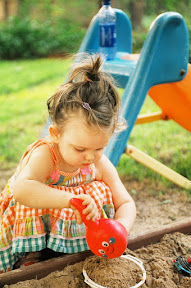
Sandboxes: Is Your Sand Safe?
Posted: May 11, 2012 Popular DIY bloggers Sherry and John Petersik of Young House Love recently posed a question about the safety of some sandboxes. Their concerns were over certain types of sand -- commonly found in playgrounds or sandboxes -- that contain crystalline silica and asbestos tremiline-- both known to potentially put children at risk for developing cancer, says Susan Helms, Le Bonheur director of Injury Prevention and Safe Kids Mid-South.
Popular DIY bloggers Sherry and John Petersik of Young House Love recently posed a question about the safety of some sandboxes. Their concerns were over certain types of sand -- commonly found in playgrounds or sandboxes -- that contain crystalline silica and asbestos tremiline-- both known to potentially put children at risk for developing cancer, says Susan Helms, Le Bonheur director of Injury Prevention and Safe Kids Mid-South.
Helms says the kind of play sand that can have both of these carcinogens is made from crushed rock, so look for river or beach sand for your child's sandbox. These can usually be found at landscape or gardening stores. Though slightly more expensive, Safe Sand sells carcinogen-free sand for sandboxes.
Helms also recommends following these guidelines from the National Health and Safety Performance:
- Sand play areas should be distinct from areas for any other equipment (such as swings, slides).
- All sandboxes should be kept covered when not under active adult supervision. This area needs to be secured to prevent entry by children or animals, and sufficient to prevent contamination by liquids and solids.
- Sandboxes should be equipped with constant and effective drainage systems and made to present no safety hazards.
- Sterilized sand or very fine pea gravel may be used.
- Sand that becomes contaminated should be replaced. Treatment of sand with chemicals is not recommended.
- Sand in sandboxes and play areas should be replaced as needed, but at least every two years.



